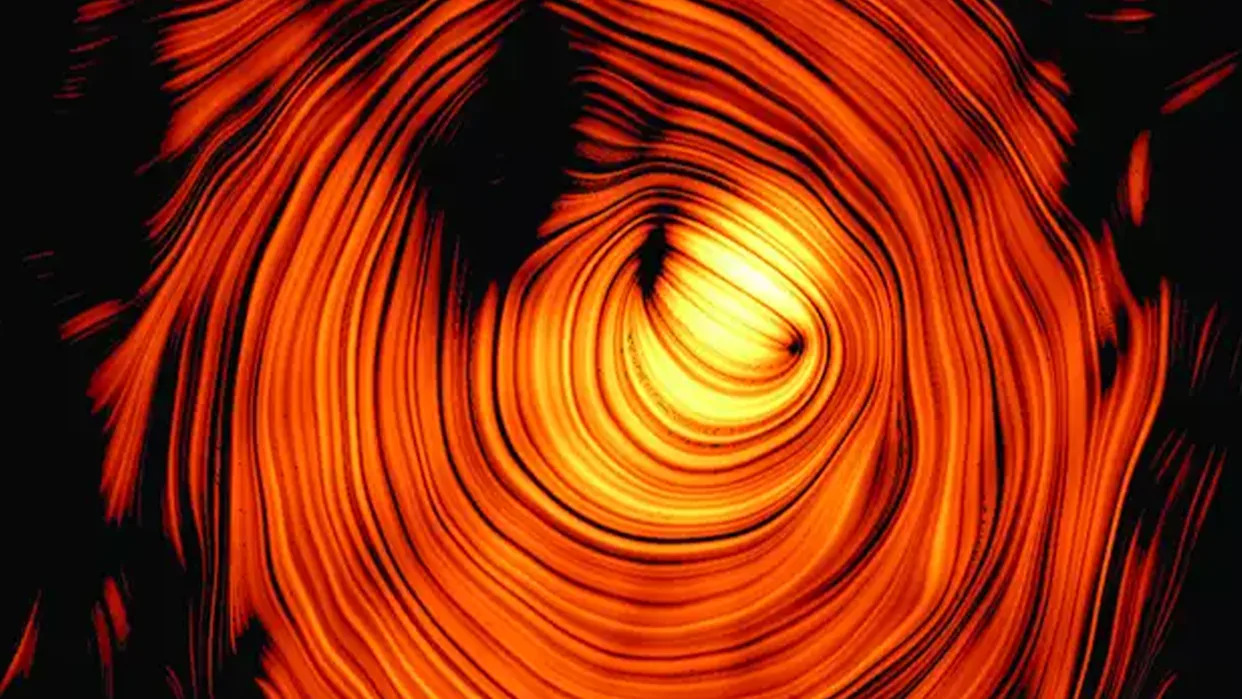A Cosmic Jet Resembling the ‘Eye of Sauron’ Discovered Billions of Light-Years Away

Astronomers have observed a remarkable cosmic jet emanating from a distant galaxy that bears a striking visual resemblance to the “Eye of Sauron” depicted in The Lord of the Rings. The phenomenon, located billions of light-years from Earth, was revealed through 15 years of data collected by the Very Long Baseline Array (VLBA), a network of radio telescopes across the United States and island territories. Findings detailing the structure of this unique jet were published August 12 in Astronomy & Astrophysics.
The unusual feature originates from PKS 1424+240, a blazar – an active galactic nucleus characterized by a supermassive black hole at its center that emits intense radiation and powerful plasma jets moving close to the speed of light. Blazars are intensely luminous regions within galaxies not powered by stellar processes. The jet’s appearance is particularly noteworthy due to the near-perfect toroidal, or doughnut-shaped, magnetic field surrounding it, a characteristic captured in unprecedented detail.
“The resulting image was absolutely stunning,” stated Yuri Kovalev, an astrophysicist at the Max Planck Institute for Radio Astronomy and co-author of the study. “We have never witnessed anything quite like it.”
The alignment of PKS 1424+240 with Earth allows astronomers to view the jet nearly head-on, amplifying its high-energy emissions and providing a rare opportunity to examine its internal structure. By analyzing polarized radio signals, researchers were able to map the magnetic field within the jet, revealing potential helical or toroidal configurations that significantly influence plasma flow.
The discovery contributes to ongoing efforts through the MOJAVE program, which utilizes Very Long Baseline Interferometry (VLBI) – a technique combining data from multiple telescopes to create a virtual telescope spanning vast distances – to study cosmic jets. This approach delivers exceptionally high resolution imaging, enabling detailed observation of these distant phenomena.
“When MOJAVE began, connecting black hole jets to cosmic neutrinos appeared fantastical,” remarked Anton Zensus, co-founder of the program. “Our observations are now transforming that concept into a tangible reality.”









